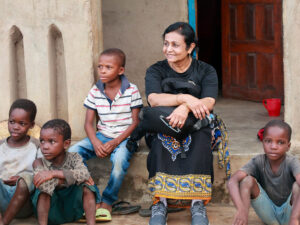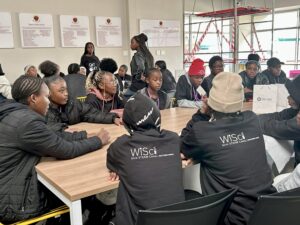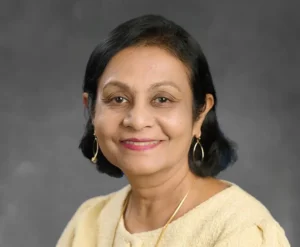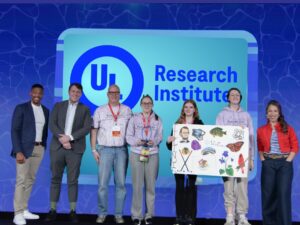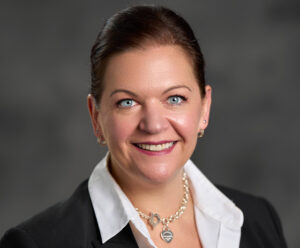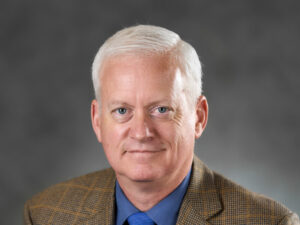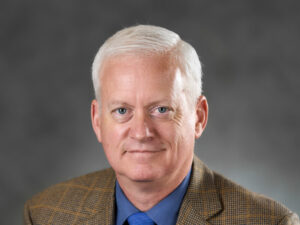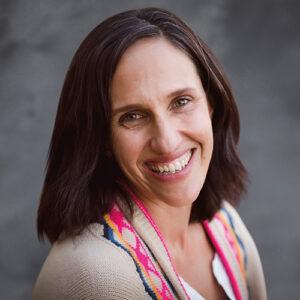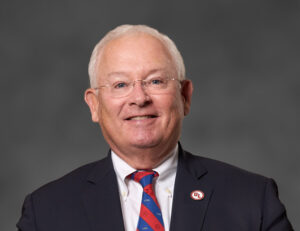Threading the Needle of Climate Education

Institute for Research Experiences & Education Senior Education Specialist Jess Sparacino shares her experience participating in the Smithsonian Institution’s Climate Resilience! Academy, where she joined educators from around the world in conversations about climate education and sustainability.
“How can communities adapt to a changing climate?” In fall 2024, a group of 26 educators — myself included — collaborated to seek answers to that question for ourselves and our learners.
As part of the Smithsonian Science for Global Goals’ Climate Resilience! Academy, we were selected by the Smithsonian to participate in weekly virtual meetings where we listened to climate researchers from the Smithsonian, then jumped into breakout rooms to discuss implications for education.
Of course, climate change is a thorny global issue with local impacts. Climate educators must thread these needles for their students. Relevance without overwhelm, concern without anxiety. One of the great challenges of climate education: these impacts are sometimes visibly devastating, but sometimes unseen.
Our 2024 cohort was internationally dispersed across North and South America, illuminating the global and local nature of climate change.
We began the course by exploring the meaning of climate resilience in the first place. The academy emphasized the intertwined relationship between resilience and sustainability. In these sessions, we defined resilience as the physical, mental, and social ability to systemically respond to challenges. Meanwhile, sustainability is a measurement of balance between social, economic, environmental, and ethical factors; this balance reduces strain on systems and leads to better resilience.
One way that our group shared experiences of resilience was when it came to the issue of coastal flooding. In a small group, two educators based in New York City shared their experiences with Hurricane Sandy. It was powerful to hear the story of the same event from two different people who experienced and processed this event completely differently. Communication and empathy revealed common threads between the two educators’ stories. Together, we were shaping new personal understandings of what “climate resilience” could mean.
Throughout the academy, we connected our personal experiences to similar stories of climate resilience from communities around the country and the world. We discussed a case study about a government-backed campaign for push notifications in response to hazardous heat waves in Buenos Aires. In response, I reflected upon the pink skies and thick air that smothered Chicago in summer 2023 as a result of Canadian wildfires, and the push notifications I received from my phone’s weather app. As educators, we discussed the efficacy of these existing solutions and how we could prepare students to design iterated versions bespoke for their own communities.
“Community is a word we keep coming back to in this academy,” I brought up during one of our virtual meetings, “Could you please define what you mean by that? What kind of scale [do we mean by community]?”
One of the facilitators chuckled. “That’s a question we get every single time we lead this professional development. Often, we encourage educators and students to use their school or neighborhood as their reference for the community level.”
Community was a clear focal point of the academy. Though we explored examples of resilience issues at a global scale, we constantly made connections back to our own experiences. A common structure was discover, understand, act. Making plans and observations rooted in our own experiences was integral to processing systemic concepts like food systems and water management.
It may come as no surprise that throughout this experience, I was often thinking about the Institute for Research Experiences & Education’s Xplorlabs platform. Xplorlabs seeks to make evident the relevance of safety science phenomena to students’ lives. We also use a structure similar to discover, understand, act built on the “5 Es”: engage, explore, explain, elaborate, evaluate.
The educators and students who use Xplorlabs live in diverse communities all around the world. With that in mind, our team has sought balance between local relevance and global connection, especially when it comes to safety science phenomena related to resilience and sustainability.
The Climate Resilience! Academy illustrated how educators and students can thread that needle: by weaving a tapestry between the local and the global. By sharing opportunities for students to identify the threads that connect their own observations to those made by people practicing science around the world. By giving students the tools they need to add their own threads — in other words, engineered solutions — to this tapestry. By making it apparent that students don’t need to start their own designs from scratch but that they can weave in and out of the cloth that has already been woven into. Together, we can stitch together something beautiful, durable, and resilient.
PUBLISHED
